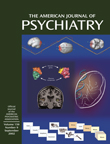Comprehensive Handbook of Psychopathology, 3rd ed.
Reviewing 32 multiauthored chapters presents difficulties. These chapters are organized into six basic sections: Issues in Psychopathology, Neurotic and Psychotic Disorders, Personality Disorders, Disorders Associated With Social and Situational Problems, Disorders Associated With Physical Trauma and Medical Illness, and Disorders Arising in Specific Life Stages.
In their initial chapter, Henry Adams and associates state that a classification system should be guided by naturalistic and experimental observations rather than theoretical postures. Explanation comes after description. The extensive discussion of dimensions and categories (both conjunctive and disjunctive) culminates with the statement that “the justification of a particular model of classification is determined by how accurately the model facilitates the prediction, control and understanding of the response.” This does not seem problematic. Adams and associates carefully distinguish their views from those claiming that abnormal behavior is first and foremost a social judgment. They conclude that the combination of categorization and a dimensional approach may be most meaningful in the long run. This agnostic attitude seems a better framework for scientific studies than a rigid compartmentalization into orthodox and heterodox views.
Sol Garfield’s chapter, “Methodological Issues in Clinical Diagnosis,” provides pithy reminders of frequent difficulties:
A final point concerns inadequate or apparently biased citing of the relevant research literature. I cannot recall seeing any discussion of this topic in presentations of research on either clinical diagnosis or treatment. Perhaps it is assumed that all investigators are aware of the need to review carefully the existing research on the topic under investigation. Nevertheless, this issue is not mentioned in critiques of research reports or reviews of research.…The issue is of some importance where there is conflicting literature on a specific topic and investigators refer primarily to those published reports that support their findings or positions and omit mention of findings that fail to do so. Such a practice violates accepted standards of scholarship, misleads uninformed readers of the research reports and may tend to perpetuate the use of fallible diagnostic techniques.
Garfield presents clarifying approaches to knowledge generation that should help cut through the fog of ideological controversy. Unfortunately, some encyclopedic attempts in this volume do not live up to Garfield’s standards. For instance, meta-analytic conclusions are asserted about the relative merits of pharmacotherapy and psychotherapy, ignoring critiques and reasonable caveats (e.g., direct comparisons of different treatments within the same randomized, controlled independently assessed study are conspicuously rare, and the cited meta-analyses compare effect sizes derived from different studies, subject samples, measures, treatment lengths, etc.). One chapter makes the assertion that “any genetic factors are general to all of the anxiety disorders” but does not cite or discuss studies finding that some anxiety disorders breed true. Such spottiness in a reference work substantiates Garfield’s concerns.
A complex edited book is not a single variable; nonetheless, my evaluation is that the average is pretty good but the range is too large.



